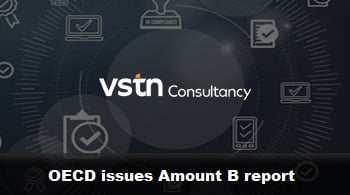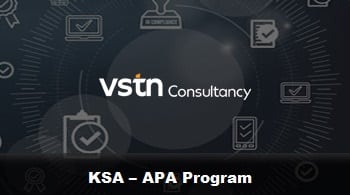Transfer Pricing – Safe Harbour Rules
Recent Amendment to Financial transaction and Operating Income / Expense definition
The CBDT issued a notification on 19 December 2023 amending the existing safe harbour rules applicable from FY 2023-24. The alert captures in detail the amendments to the existing Safe Harbour Rules which include:
1) For foreign currency denominated loans, transition from LIBOR to Alternate Reference Rate (ARR). Currently 6 prominent ARR have be provided for the respective currency viz., SOFR (USD), EURIBOR (EUR), SONIA (GBP), TORF (Yen), BBSW (AUD) and SORA (SGD)
2) Extending the coverage of Safe Harbour to all associated enterprise, which is currently eligible for loan advanced to wholly owned subsidiary.
3) Removal of ceiling for loans advanced denominated in foreign currency. Introduction of slabs for the spread over the ARR based on the quantum loans advanced i.e., upto INR 250 crores and greater than INR 250 crs.
4) Credit rating defined to mean ratings obtained from an agency approved by SEBI and accredited by RBI. Further in case of multiple credit ratings, the lowest to be considered for the purpose of Safe Harbour rules.
5) For loan advanced to associated enterprises to be eligible under Safe Harbour, existing condition on sourcing of loan in INR has been removed.
6) Definition of operating income and operating expense amended w.r.t profit / loss on transfer of assets. As per the amendment, where depreciation on the transferred asset is included in operating expense, the profit or loss arising on account of such transfer will also be treated as operating in nature.
With these welcome amendments, the scope of covered transaction under the safe harbour has increased and businesses can consider opting under the Safe Harbour route to effectively and efficiently manage their transfer pricing dispute resolution.
Safe Harbour Rules
Amendment in Financial transactions and definition of operating expense / income
December 2023
Summary
The Central Board of Direct Taxes issued Notification No. 104/2023 dated 19 December 2023 to update the Safe Harbour Rules w.r.t. financial transactions and definition of operating income and operating expenses, effective from Financial Year 2023-24 (i.e., Assessment Year 2024-25).
In the notification, the benchmark rate in the Safe Harbour Rules have been transitioned from existing LIBOR to Alternate Reference rates viz., SOFR (USD), EURIBOR (EUR), SONIA (GBP), TORF (Yen), BBSW (AUD) and SORA (SGD). Further, the definition of intra-group loan was substituted to cover advance of loan to any associated enterprise and the loan can be sourced in any currency. Currently the definition covered only loans to wholly owned subsidiaries and loans sourced in INR. The definition of operating income and expense has been parallelly updated to include income / loss on transfer of assets for which depreciation forms part of operating expense. This alert summarizes the updates to the Safe Harbour Rules and the key takeaways / way forward in the following sections.
Financial Transactions
Benchmark rates, Quantum and Credit rating
Benchmark Rates – Transition to Alternate Reference Rates
The key amendment in this notification is the transition from LIBOR as the benchmark rate to Alternate reference rates for the respective currencies as on 30th September of the relevant year. With the phasing out of LIBOR, various legislations have transitioned to alternate reference rates and the same was expected with respect to Safe Harbour Rules as well, which was effected through this notification. While updating the references to alternate rates, the CBDT also increased these reference rate by certain basis points (bps), on a case-to-case basis.
The alternate reference rates currently in this notification has been provided for six currencies viz.:
- US Dollar: 6-month Term SOFR by Chicago Mercantile Exchange (CME), increased by 45 bps.
- Euro: 6-month EURIBOR by European Money Markets Institute.
- GBP: 6-month SONIA by ICE Benchmark Administration/Refinitiv, increased by 30 bps.
- JPY: 6-month TORF by QUICK Benchmarks Inc, increased by 10 bps.
- Australian Dollar: 6-month Bank Bill Swap Rates (BBSW) by Australian Securities Exchange.
- Singapore Dollar: 6-month Compounded SORA by Monetary Authority of Singapore, as increased by 45 bps.
Increase in the quantum of covered transaction
With respect to loans denominated in foreign currency, the consideration for loan advanced to associated enterprise has been split into two categories viz.,
- Total sum of loans to all associated enterprises as on 31 March of the year not exceeding INR 250 crores.
- Total sum of loans to all associated enterprises as on 31 March of the year exceeding INR 250 crores.
Currently the Safe Harbour rules cover only loans where the aggregate value of which does not exceed INR 100 crores. The spread to the reference rate has also been revised for the respective categories as follows:
| Aggregate Loan not exceeding INR 250 crores | Aggregate Loan exceeding INR 250 crores |
|---|---|
| 150 bps, where AEs have credit rating of AAA, AA+, AA, AA-, A+, A, A- or equivalent | 150 bps, where AEs have credit rating of AAA, AA+, AA, AA-, A+, A, A- or equivalent |
| 300 bps, where AEs have credit rating of BBB+, BBB, BBB- or equivalent | 300 bps, where AEs have credit rating of BBB+, BBB, BBB- or equivalent |
| 400 bps, where AEs have credit rating of BB+, BB, BB-, B+, B, B-, C+, C-, C-, D or equivalent or | 450 bps, where AEs have credit rating of BB+, BB, BB-, B+, B, B- or equivalent |
| where the credit rating of AE is not available | 600 bps, where AEs have credit rating of C+, C, C-, D or equivalent or where the credit rating of AE is not available |
The key aspect to note is that in the current Safe Harbour Rules, the spread in case where credit rating of the associated enterprises if not available was 400 bps, while in the revised Safe Harbour Rules the spread has been mapped with the lowest credit rating.
In connection with the loans denominated in INR, the spread and the associated credit ratings has remained unchanged.
Credit Ratings
An explanation for Credit Rating has been inserted in the Safe Habour Rules to mean credit rating assigned by an agency registered with SEBI and accredited by RBI. Consequently, the specific reference to “CRISIL credit rating” has been modified to “credit ratings” in all the applicable sections.
Further the explanation also states that where there are multiple credit ratings for an associated enterprise, the lowest of all the ratings shall be considered while arriving at the spread for the purpose of Safe Harbour Rules.
Other Aspects / Definition
- The definition of intra-group loan has been modified to in order to widen the coverage of applicability of the Safe Harbour Rules to any associated enterprise. Currently, the Safe Harbour Rules defines intra-group loan as that which is extended to non-resident wholly owned subsidiary. Wholly owned subsidiary has been replaced with associated enterprises, thereby extending the coverage of Safe Harbour Rules.
- The condition on sourcing the loan in INR has been omitted in the updated definition. Currently, the Safe Harbour Rules are applicable where loans are sourced in INR, which can be either through internally generated reserves or external lenders which provide INR denominated loans. However, businesses often source funds from overseas owing to myriad economic factors, in order to funds their foreign subsidiaries / associated enterprises. With this amendment, businesses sourcing such loans in foreign currency can also opt under the Safe Harbour Rules.
Operating Income / Expenses – Definition
The Safe Harbour Rules defines operating income and operating expenses for the purpose of computing the arm’s length mark-up for provision of services to associated enterprises. These definitions provide illustration of both operating and non-operating items. Among others ‘income on transfer of assets or investments’ has been excluded as non-operating in nature. Similarly, ‘loss on transfer of assets or investments’ has been excluded as non-operating in nature.
Under operating income and operating expense, the revised Safe Harbour Rules have restricted the ‘income / loss on transfer of assets’ to other than assets on which depreciation is included in operating expense. In other words, in case of assets for which depreciation is included in the operating expenses, the profit or loss due to transfer of such assets will be treated as operating in nature.
The key point to note is that while computing the arm’s length mark-up under the Safe Harbour Rules, since the depreciation on such assets are usually included in operating expense, the loss on transfer of assets will also have to be included in the cost base. Similarly, any income arising out due to transfer of assets can also be considered as operating income arriving at the mark-up for the purpose of Safe Harbour Rules.
Through this amendment, the CBDT seeks to harmonise the classification of income / loss as the expensing of the asset during the year of transfer would otherwise be two-fanged i.e., as per the existing definition for assets transferred, the depreciation portion would be considered as operating in nature and considered in operating expense while the loss or profit on account of such sale would be treated as non-operating in nature. With the amendment, this variance will be removed.
Key Takeaways / Way Forward
The transition of benchmark rates from LIBOR to Alternate Reference Rates was expected in the Safe Harbour Rules. Revision of the Safe Harbour Rules before the close of the corresponding financial year is a welcome move, considering that applicability of Safe Harbour Rules are usually extended after the year-end. Further, the removal of the ceiling for financial transactions w.r.t. loans advanced in foreign currency from the existing threshold of INR 100 crores would incentivize taxpayers to opt under Safe Harbour Rules and thereby increasing tax certainty.
Nevertheless, there exists other facets of Safe Harbour route on which businesses await amendments including rationalization of mark-up for manufacturing of core and non-core auto components, increase of the threshold for low value adding services and inclusion of other commonly litigated transactions such as royalty under the Safe Harbour Rules. With these changes, Safe Harbour route should witness wider adoption by businesses, as it would be effective and efficient approach in transfer pricing dispute resolution and contribute to the ease of doing business in India.
About us
VSTN Consultancy Private Ltd is a boutique Transfer pricing firm with extensive expertise in the field of international taxation and transfer pricing.
Our offering spans the end-to-end Transfer Pricing value chain, including design of intercompany policy and drafting of Interco agreement, ensuring effective implementation of the Transfer Pricing policy, year-end documentation and certification, BEPS related compliances (including advisory, Masterfile, Country by Country report), Global Documentation, safe harbour filing, audit defense before all forums and dispute prevention mechanisms such as Advance Pricing agreement.
We are structured as an inverse pyramid where leadership get involved in all client matters, enabling clients to receive the highest quality of service.
Being a specialized firm, we offer advice that is independent of an audit practice, and deliver it with an uncompromising integrity.
Our expert team bring in cumulative experience of over five decades in the transfer pricing space with Big4s spanning clients, industries and have cutting edge knowledge and capabilities in handling complex TP engagements.
As businesses expand across borders, navigating complex transfer pricing regulations becomes critical. At VSTN Consultancy, a global transfer pricing firm, we specialize in helping companies stay compliant and competitive across key markets including:
India | UAE | USA | KSA | Dubai | Asia Pacific | Europe | Africa | North America
Whether you’re preparing for benchmarking intercompany transactions, or developing robust TP documentation, our team is here to support your international strategy and Compliance.
Contact us today to explore how we can partner with you to optimize your global transfer pricing approach.
#TransferPricing #TransferPricingFirm#VSTNConsultancy #TaxCompliance #IndiaUAEUSA
#TPExperts#TransferPricingExperts#GlobalTransferPricingFirm



